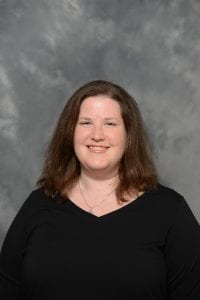It Started With a Book
By Lina Sheahan, Music Librarian

I am a librarian, I am a musician, I am not an avid reader. Surprising, I know, but it is also something I am trying to remedy, which is why I decided to participate in one of the Teaching Center’s summer reading groups. I chose Violins of Hope, a book I wanted to read, and I knew participating in the group would keep me accountable. Little did I know, my summer reading group would point me on a journey to uncovering some family secrets feeling more connected to my family history than ever before.
When I picked up my copy of Violins of Hope, I skimmed the table of contents, and among the violin names one stood out – Ole Bull’s Violin. As a lover of Norwegian music and a proud person of Norwegian heritage, I am very familiar with Ole Bull’s work, but I was unfamiliar with the story that unfolded in the chapter. Ernst Glaser, who was born in Germany but lived in Norway and identified as Norwegian, was concertmaster of the Oslo Philharmonic, and his love for Norway and its music made him a beloved cultural figure. In January of 1941, Ernst was scheduled to perform a concerto with the Bergen Philharmonic on a 1742 Guarneri violin donated by Ole Bull’s family. However, Bergen was occupied by the Germans and performing there was a huge risk for the Jewish artist. The concert was disrupted by the Norwegian Nazi Youth, fights broke out in the aisles of the concert hall, and Ernst fled with the violin back to the relative safety of Oslo. As anti-Semitic sentiments grew in Oslo, Ernst was encouraged to flee to neutral Sweden, which he did on October 27, 1942 with the help of members of the Norwegian resistance movement. Ernst and his wife Kari traveled Sweden giving concerts for the “Boys in the Woods,” Norwegian freedom fighters who were being trained as a reserve police force in anticipation of liberating Norway from Nazi occupation. They returned to Norway in 1944, immediately after the liberation.
When I read this chapter, I got chills. Growing up, I was always told that my grandfather (my Morfar) fought in the Norwegian resistance, but we knew very few details. I knew that he was chased by a Nazi through the mountains of Norway because he worked in mining and had access the heavy water Hitler wanted to build the atomic bomb. Eventually, he fled to Sweden and was an officer who trained the troops that marched back into Norway and liberated the country. Aside from a conversation we had in the Norwegian Resistance Museum when I was 10 (that I barely remember), Morfar never talked about the war so these few facts are all I know about his military service and life in occupied Norway. I did know that Morfar loved music, and while I read about Glaser’s time in Sweden, I could not help but wonder if he was one of the “Boys in the Woods” that had the pleasure of listening to the violinist and his wife.
I brought my few facts, my curiosity, and my new knowledge from the chapter of Violins of Hope to the next reading group meeting. I started telling my grandfather’s story, expecting that we would discuss it for a few minutes before moving on to another topic. Instead, my fellow reading group members took immediate interest, and we ended up talking about my grandfather’s life and my family history the entire hour. At the end of our meeting, the prevailing questions were “When are you writing a book?” and “You’ll include us in the acknowledgments, right?” The interest, care, and support shown by my colleagues is indicative of my Belmont experience. Even though I did not know a lot of information (my grandfather died with a lot of secrets), my reading group members were so encouraging and excited and interested in what little information I did know, that it lit a fire in me to fill in the gaps and find out the details Morfar was not able to share. Now I have a project – a big project – my life’s work, if you will, and it all started because I decided it was time for me to read a book.
During the fall 2018 semester, the Teaching Center is offering book groups for Small Teaching: Everyday Lessons from the Science of Learning by James Lang, Learner-Centered Teaching: Five Key Changes to Practice by Maryellen Weimer, and A Good Cry: What We Learn From Tears and Laughter by Nikki Giovanni. For more information on Teaching Center book groups, click here.